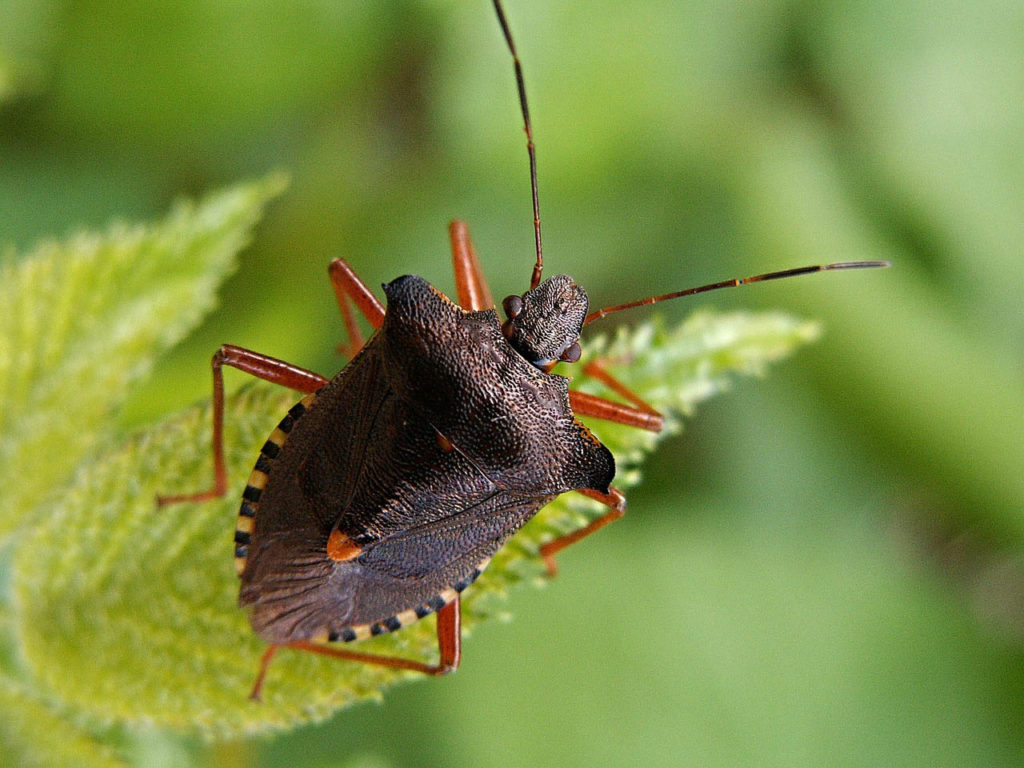My kids love critters. Squirmy, slithering, hairy, slimy, spiny critters. They swoon for caterpillars, centipedes, moths, crickets, earthworms, grubs, slugs, craw dads, leeches and spiders. I have yet to find a critter that they didn’t want to pick up and subject to a small animal nature study. Me? I love the outdoors and getting my hands dirty in the garden, but honestly I’m good just looking at creepy crawlies from a safe distance rather than having them wander around in the palm of my hand.

It hasn’t always been like that. In fact some of my most cherished childhood memories involve catching countless big, black slugs from the forest behind our house and creating enclosures for them in our backyard (from which they inevitably escaped). Chances are many of you have similar memories.
Regardless of how we personally feel about bugs and slimy critters, there are many good reasons why we should let our kids acquaint themselves with them. Insects, spiders, slugs and other critters are typically abundant regardless of where you live (in fact, insects make up 90 percent of all animal life on Earth). That means catching and handling bugs, and doing a small animal nature study, is an easy way for a child to connect with wildlife in nearby nature.

Benefits of a small animal nature study for kids
- Handling small animals provides children with tactile input, which in turn supports a healthy sensory development.
- Exposing children to bugs and small animals early on may make them less likely to develop irrational fears of them later in life.
- Dealing with small, vulnerable critters helps teach children how to be gentle and compassionate.
- Searching for critters encourages children to get their hands in the soil, which contains microbacteria that are beneficial to our health and well-being.
- Studying bugs and their different life cycles helps children understand the bigger picture of life and death.
How to do an animal nature study
Critter studies can be done any time of the year even though you can expect to see less activity in the winter. Do it at different times of the year to see which animals are active during each season. Don’t attempt to handle any mammals or birds, since that may interfere with their natural instincts and ultimately put their lives at risk. Also, use your judgment in which animals to pick up – if you know your area is inhabited by venomous species, you need to be able to identify and avoid contact with those.
Location: Any natural area, backyard or park
Materials:
- Butterfly net (not mandatory but helps if your child wants to capture something that flies)
- Bug container to hold the critter
- Magnifying glass
- Small shovel for digging
- Natural materials to build a habitat (varies from species to species, but could for example be grass, rocks, water, sticks etc.)
Method:
- Take your child for a walk in a natural area or simply explore your backyard by looking underneath rocks or digging holes.
- Observe the critters you find and let your child handle them if he or she wants to – but don’t force it.
- Ask open-ended questions about the animals that you see, such as “What do you think they eat?” “Where do they sleep?” and “Who do you think they may be food for?” Don’t worry if you don’t have all the answers right off the bat – you can always look things up later.
- Catch critters with the butterfly net or your hands and place them in the bug container or a simple cardboard box, jar or plastic cup. Just make sure the container is not air tight, since this will cause the animals to suffocate.
- Build a temporary habitat for the critters in the container and again talk to your child about what the animal needs to live.
- Use a magnifying glass to take a closer look at the animal’s body parts. Can you count the number of legs? Wings? Antennae?
- Release the animal/s when you’re done. The last thing we want to do is harm or kill anything in the process of studying it.

Some good online resources about bugs:
National Geographic Kids – Insects
Insect Identification – Spiders, Bugs and Insects
Disclaimer: This post contains affiliate links. I earn a small commission from sales from these links, at no extra cost to you. Read my full disclosure policy here.



do you have a twitter that i can follow
Sure do:o) I’m @rainshinemamma.
What a great activity. I’m trying to re-acclimate my son to bugs after a well-meaning relative warned him about stinging ones and got him scared to touch ALL bugs. Sigh. Following on twitter! (I’m @bphotoart) …and pinning this too 🙂
Thanks for stopping by, Betsy! I love your blog and your photography work:o) Let’s keep in touch.
Critter hunts are awesome! Thanks for linking up at Discover & Explore Outdoor Activities. I’ll be featuring your in our summer round-up this week 🙂
Great! I’ll look out for it!
We love bug hunts too. Amazing how there is always something different to see.
xo Donni
I know – grasshoppers are my girls’ favorite right now:o)